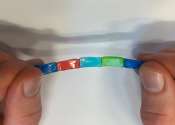Review of recent progress in robotic printing of surgical implants promoting cartilage regeneration
Over the course of their lives, some humans can partly or fully lose the ability to move their limbs because of damage to their cartilage, the flexible connective tissues cushioning the bones. This can be due to degenerative ...









